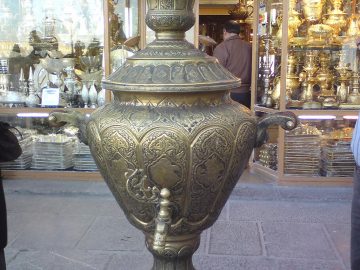Isfahan is the jewel of ancient Persia, the climax of art and architecture of 17th century Persia, and the greatest physical legacy of Shah Abbas, a capital which he transformed into one of the most splendid monumental cities in the Islamic world. The main highlights include:
the living testimony of the evolution of Iranian architecture in the Islamic period.
Naqsh-e Jahan Square (World Heritage Site) and the centerpiece to the majestic collection of palaces, public mosque, madrasa, and bazaar of the ambitious city planning of Shah Abbas the Great.
Shah Abbassi(Imam) Mosque creates a true sense of harmony with its turquoise dome, minarets and ornate portal-cornice.
Sheikh Lotfollah Mosque offers a unique experience of artistic devotion with its superb decorative elements.
Ali Qapu Palace another masterpiece in the collection of 17th-century monuments boasting a richly ornamented interior decoration.
Grand Bazaar of Isfahan adorning the northern side of Naqsh-e Jahan Square, displaying different types of artistically created handicraft items of Isfahan.
Chehel Sotun Palace a highly ornate reception palace where the Safavids entertained the foreign dignitaries.
Hasht Behesht Palace an architectural masterpiece which bears witness to the grandeur of Safavid Persia.
resting majestically over the widest part of Zayandeh Rud, the longest river of central Iran.
Khaju Bridge a luxurious bridge, deriving its inspiration from and enhancing many of the features of Sio Se Pol.
Shahrestan Bridge an architectural masterpiece with secondary channels and additional venting systems.
a superb example of a traditional hammam and its overall spirit.









